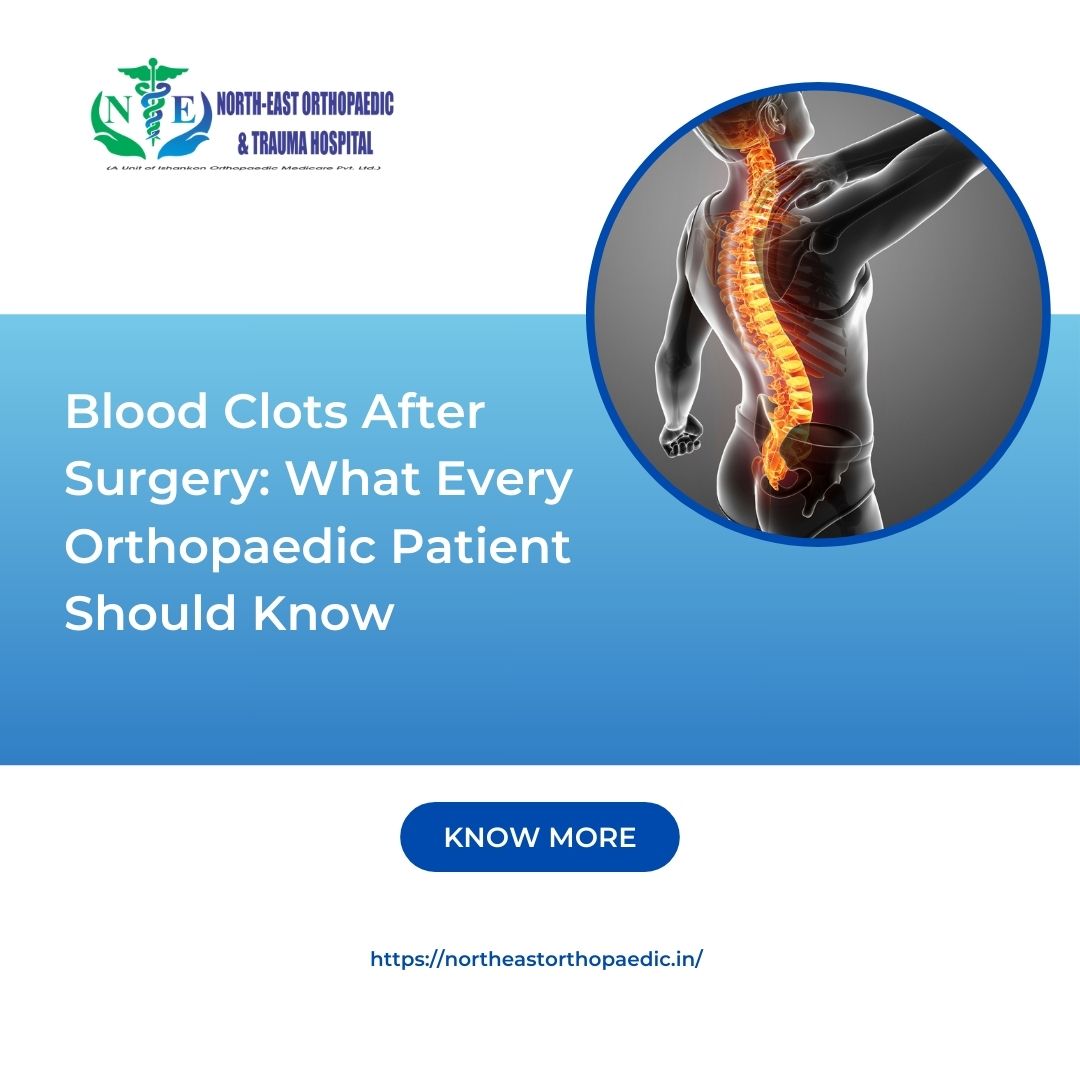Orthopaedic surgery is a major step toward relieving pain and improving mobility for people with bone or joint problems. Whether it’s a knee replacement, hip surgery, or any joint operation, the recovery period is very important. One serious risk after orthopaedic surgery is the development of blood clots, which can lead to life-threatening complications if not treated on time.
In this blog, we will explain what blood clots are, why they happen after surgery, how to spot the symptoms, and most importantly, how to prevent them. If you’re planning to undergo orthopaedic surgery or recovering from one, this guide is especially for you. And if you are looking for expert care, it is always wise to consult the best orthopaedic doctor.
What Are Blood Clots?
Blood clots are clumps of blood that change from a liquid to a gel-like or semi-solid state. While clotting is necessary to stop bleeding, unwanted clots can block blood flow in veins or arteries. After surgery, especially orthopaedic procedures involving the legs, hips, or knees, patients are at a higher risk of forming deep vein thrombosis (DVT)—a type of clot that usually occurs in the legs.
If a part of the clot breaks off, it can travel to the lungs and cause a pulmonary embolism (PE), which is a medical emergency.
Why Do Blood Clots Form After Orthopaedic Surgery?
Orthopaedic surgeries often require long periods of limited movement. When the body is not active, blood flow slows down, especially in the legs. This slow movement of blood can cause clotting. Here are a few reasons why blood clots form after surgery:
Reduced mobility: Lying in bed or avoiding movement after surgery slows circulation.
Tissue damage: Surgery can damage blood vessels, triggering clot formation.
Inflammation: The body’s natural healing response can increase clotting risks.
Personal risk factors: Age, obesity, smoking, history of blood clots, or family history can raise your chances.
This is why the best orthopaedic doctor will always guide patients with proper preventive care and monitoring during recovery.
Signs and Symptoms of Blood Clots
It’s important to know the signs of blood clots so you can get medical help as soon as possible. Common symptoms include:
Symptoms of DVT (Deep Vein Thrombosis):
- Swelling in one leg (rarely both)
- Pain or tenderness in the leg (especially in the calf)
- Warmth and redness in the skin of the affected leg
- A heavy or tight feeling in the leg
Symptoms of PE (Pulmonary Embolism):
- Sudden shortness of breath
- Chest pain that worsens with deep breathing
- Fast heartbeat
- Coughing (sometimes with blood)
- Feeling dizzy or fainting
If you notice any of these symptoms after surgery, consult a doctor immediately.
How to Prevent Blood Clots After Orthopaedic Surgery
The good news is that blood clots can be prevented with the right precautions. Here are some effective prevention tips:
- Move as Soon as Possible: Start moving or walking as early as your doctor allows. Even simple leg movements or ankle pumps in bed can improve blood flow.
- Wear Compression Stockings: Compression stockings help improve circulation in your legs and prevent swelling. Your doctor may recommend wearing them during recovery.
- Take Blood Thinners: Your orthopaedic doctor may prescribe blood-thinning medications (anticoagulants) to reduce the risk of clots. Follow the dosage and schedule strictly.
- Stay Hydrated: Drinking enough water helps keep your blood from becoming too thick.
- Avoid Smoking: Smoking can increase your risk of blood clots. Try to quit before surgery for better recovery and long-term health.
- Regular Follow-ups: Keep up with your doctor’s appointments. The best orthopaedic doctor will monitor your recovery closely and suggest any changes in medication or therapy as needed.
Who Is at Higher Risk?
Some patients may have a higher risk of blood clots. These include:
- Older adults (especially over 60)
- People who are overweight or obese
- Those with a history of heart disease or stroke
- Patients who have had previous blood clots
- Smokers
- Women taking birth control or hormone therapy
If you fall into any of these categories, your doctor may take extra precautions to protect you.
When to See a Doctor
You should contact your doctor immediately if you notice any symptoms of DVT or PE, even if they seem minor. Early diagnosis and treatment can save lives. The best orthopaedic doctor will also educate you on what symptoms to watch for and when to seek help.
Final Thoughts
Blood clots after orthopaedic surgery are a serious issue, but with the right care and awareness, they can be prevented. Staying active, taking prescribed medication, and following your doctor’s instructions are key to a smooth recovery.
If you or a loved one is planning orthopaedic surgery, make sure to choose a trusted expert. The best orthopaedic doctor will not only perform the surgery with skill but also ensure safe recovery with proper post-operative care. Don’t take risks with your health—stay informed and stay safe.

